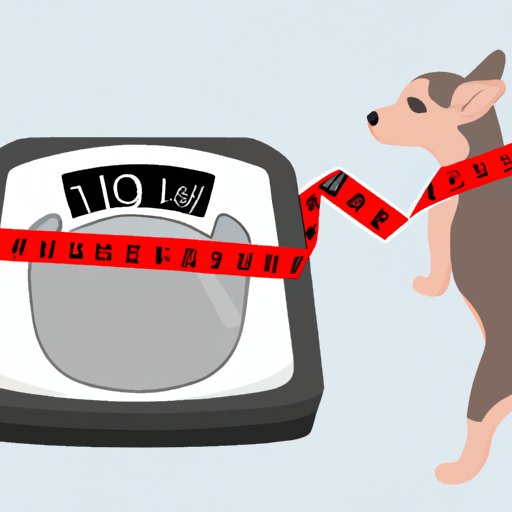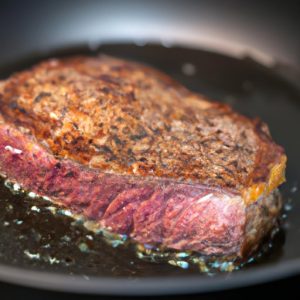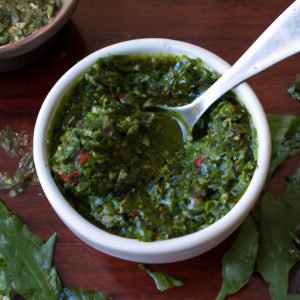
Introduction
As a dog owner, there’s nothing like seeing your furry friend’s tail wag with joy. However, a growing epidemic among dogs is causing some pet owners undue worry. Obesity is a serious problem facing many dogs, which can lead to health problems such as heart disease, joint issues, and diabetes. Losing weight, however, is easier said than done. Fortunately, there are effective strategies you can use to help your dog shed those excess pounds, improve their overall health, and lengthen their lifespan.
Understanding the Causes of Dog Obesity and How to Prevent It
There are several causes of dog obesity, including overfeeding, lack of exercise, breed predisposition, age, medical conditions and certain medications. A dog’s diet and activity level are the fundamental factors when it comes to weight management. Pet parents should develop a routine that allows for a balanced diet and adequate exercise and follow these simple prevention methods:
Portion Control
Controlling the amount of food your dog consumes is crucial. Feeding your dog too much, too fast, or too frequently can lead to overeating and weight gain. To ensure portion control, consider feeding your pet smaller meals throughout the day or using a feeding schedule. This is an effective method that allows dogs to keep a healthy metabolism and avoid overeating.
Exercise
An active lifestyle is key when it comes to weight loss for dogs. Dogs should be getting between 30 minutes to 2 hours of physical activity every day, depending on their breed and age. Talk to your vet about what types of exercise and how long they should be done to ensure your dog’s health and safety. Exercise can be a fantastic bonding experience, and both you and your dog will benefit from it.
Diet
A healthy diet should be a top priority when trying to help your dog lose weight. Make sure you’re feeding your furry friend nutritious food and limiting their intake of “empty” calories such as treats and table scraps.
Being Mindful of Health Issues
Certain health conditions can lead to weight gain in dogs such as hypothyroidism, diabetes, and Cushing’s disease. If you suspect that your pet has an underlying health issue, contact your vet immediately to develop a tailored weight loss plan.
Making Long-Term Changes
To avoid yo-yo dieting – gaining and losing weight repeatedly – once your dog has reached its goal weight, continue implementing healthy habits and behavior. This will prevent weight gain and keep your dog healthy long-term.
Recommendations for Physical Activities to Keep Your Dog Active
If you’re struggling to find fun activities for your pet, here are a few more ideas to get your pet moving:
Regular Walks or Runs
Walking or running with your dog is a great way to provide low-impact cardio exercise. It’s also a fantastic bonding activity that allows you to spend time with your furry friend. Some dogs require more exercise than others, so talk to your veterinarian about what’s right for your pet based on breed, age, and overall health.
Swim Sessions
Swimming is a low impact activity which helps to burn calories and build up muscles. It is also excellent for dogs suffering from joint pain because water gives them buoyancy and takes the weight off their joints. There are many swimming pools and facilities that provide dog-friendly swimming sessions along with a lifeguard for extra safety.
Hiking or Camping Trips
Going on hikes or camping trips is another great outdoor activity that both you and your dog will enjoy. This not only gives your dog a great workout but also puts you both in a fantastic environment that both you and your pet can appreciate.
Other Fun Activities that Keep Your Dog Engaged and Healthy
An excellent way to keep your dog healthy is to engage it with puzzles, buying toys that pique its interest and playing games such as hide and seek.
Healthy Dog Food Recipes
A dog’s health and weight depend on the quality of food consumed. Here are some delicious and nutritious recipes that you can use to make homemade dog food:
Breakfast: Pumpkin and Oats Recipe
Ingredients:
– Oats
– Pumpkins
– Peanut butter
– Coconut oil
– Eggs
Instructions:
Mix together oats, pumpkin puree, peanut butter, and coconut oil. Beat in one egg at a time. Scoop the mixture into muffin tins and put them in the oven until set. These muffins will last for approximately one week in the refrigerator.
Lunch: Chicken and Rice Recipe
Ingredients:
– Chicken breast
– Brown rice
– Green beans
– Carrots
Instructions:
Boil chicken breast in water. Once cooked, shred the chicken and add it to a pot with rice, green beans, and carrots. Add baking powder, olive oil, and spices for additional flavor. After that, cook for another 5-10 minutes until everything’s fully cooked. You may store the chicken and rice mixture in a refrigerator until needed.
Dinner: Beef and Green Bean Stew Recipe
Ingredients:
– Beef
– Tomato sauce
– Carrots
– Green beans
– Brown Rice
Instructions:
Slice beef and brown it before adding it to a pot with tomato sauce, carrots, and green beans. Add additional spices for flavor and cook until the beef is tender. Ensure everything is fully cooked before adding it to the brown rice. This tasty one-pot meal can be stored in the refrigerator for up to 5 days.
Understanding Dog Nutrition
A dog’s daily caloric intake needs to be balanced across fats, proteins, carbs, and micronutrients to maintain a healthy weight. When feeding your dog commercial dog food, ensure you’re purchasing brands that meet all their nutritional needs.
Identifying the Right Dog Food for Your Dog’s Age, Size, and Needs
There are three basic dog food types: dry, wet, and semi-moist. All three options can be great for overweight dogs, but it’s important to identify which one is best for your dog’s tastes, age, size, and health needs. Your veterinarian can help you find the appropriate type and amount to provide to your dog daily.
Creating a Balanced Diet
Pet owners should prioritize high-quality protein sources and incorporate iodine-rich ingredients such as fish, egg yolks or seaweed. Fruits and vegetables are also a great nutritional source for dogs. You may speak to your vet to choose the appropriate mix of protein, fats, and carbohydrates for your dog.
Consulting a Vet
Consulting your veterinarian is a crucial step for developing a weight loss plan tailored to your pet’s unique needs. They can advise you on recommended weight loss diets, appropriate activity levels and provide behavioral support.
A Vet’s Role in Addressing Pet Behavior Issues and Offering Support
Besides creating a nutrition plan, veterinarians are knowledgeable in treating health problems that are causing your dog to gain weight and can help owners develop healthy habits and behavior to set their dogs up for success.
Conclusion
If your dog is overweight, there’s no time like the present to help them shed those extra pounds. With a few simple lifestyle changes, including portion control, exercise, and a balanced diet, you can help your furry friend live a longer, happier, and healthier life. Engage your veterinarian to develop a tailored wellness plan, understand your dog’s nutritional needs, incorporate fun activities that boost their stamina, and avoid harmful, calorie-dense foods. Making an effort to manage your dog’s weight can not only help them be more active but also lead to a stronger bond between you and your furry friend.




